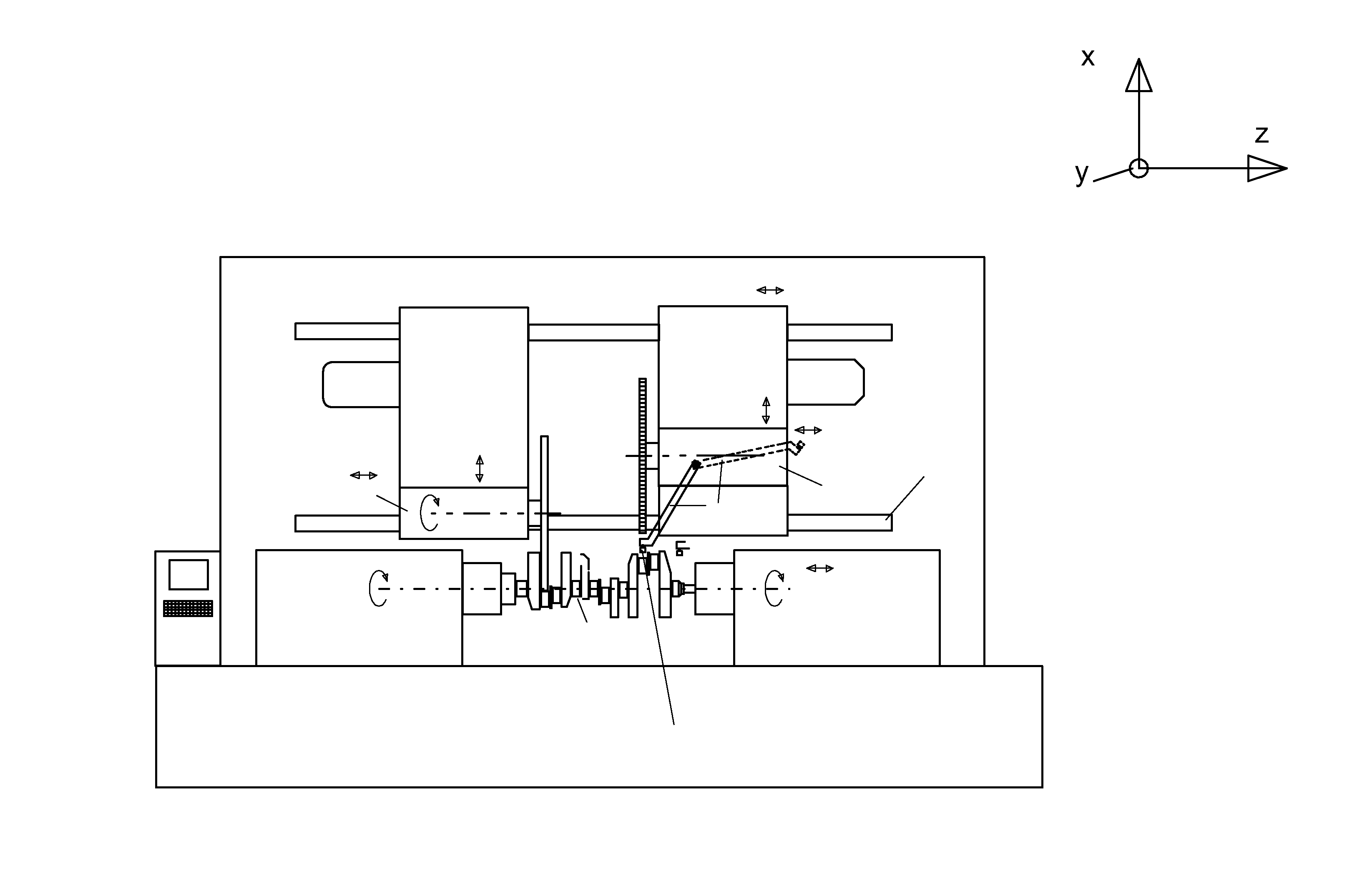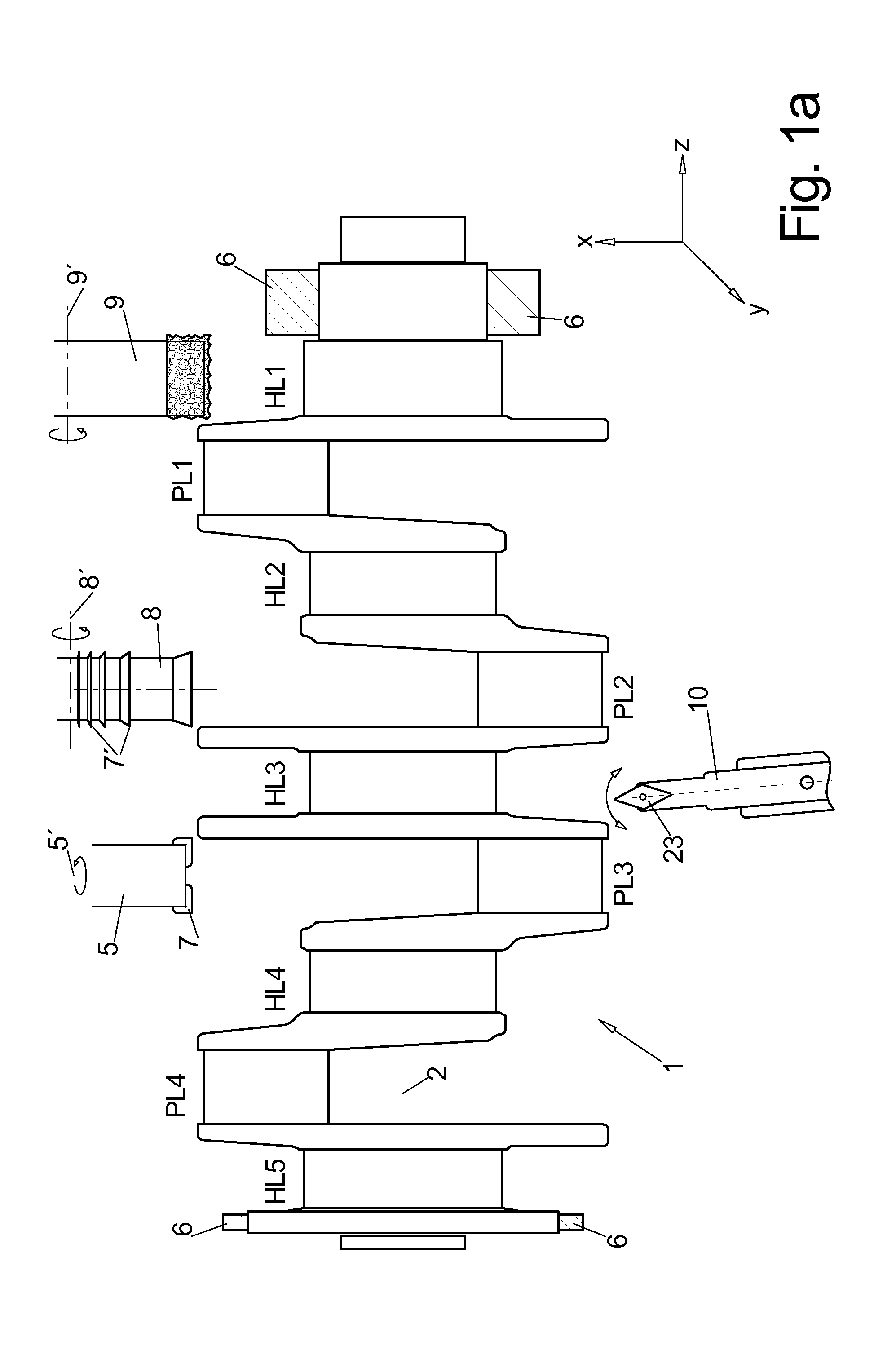Method and device for finishing work pieces
- Summary
- Abstract
- Description
- Claims
- Application Information
AI Technical Summary
Benefits of technology
Problems solved by technology
Method used
Image
Examples
Embodiment Construction
[0043]Thus it is an object of the invention to reduce fine machining of the work pieces recited supra to provide usability in particular after hardening, in particular to reduce the number of process steps.
b) SOLUTION
[0044]The object is achieved by the characterizing features of claims 1, 2 and 18. Advantageous embodiments can be derived from the dependent claims.
[0045]Thus, it is an object of the present invention to machine the work pieces recited supra and in particular their bearings after chip removing rough machining which achieves a precision of 0.1 mm and possible subsequent hardening which causes additional warping.
[0046]The subsequently recited processing steps typically relate to the same machining location.
[0047]According to the invention it is presumed that a first finishing step is required after coarse machining, wherein the first finishing step is used for achieving dimensional precision and a second finishing step is used for achieving the respect...
PUM
| Property | Measurement | Unit |
|---|---|---|
| diameter | aaaaa | aaaaa |
| diameter | aaaaa | aaaaa |
| cutting speeds | aaaaa | aaaaa |
Abstract
Description
Claims
Application Information
 Login to View More
Login to View More - R&D
- Intellectual Property
- Life Sciences
- Materials
- Tech Scout
- Unparalleled Data Quality
- Higher Quality Content
- 60% Fewer Hallucinations
Browse by: Latest US Patents, China's latest patents, Technical Efficacy Thesaurus, Application Domain, Technology Topic, Popular Technical Reports.
© 2025 PatSnap. All rights reserved.Legal|Privacy policy|Modern Slavery Act Transparency Statement|Sitemap|About US| Contact US: help@patsnap.com



